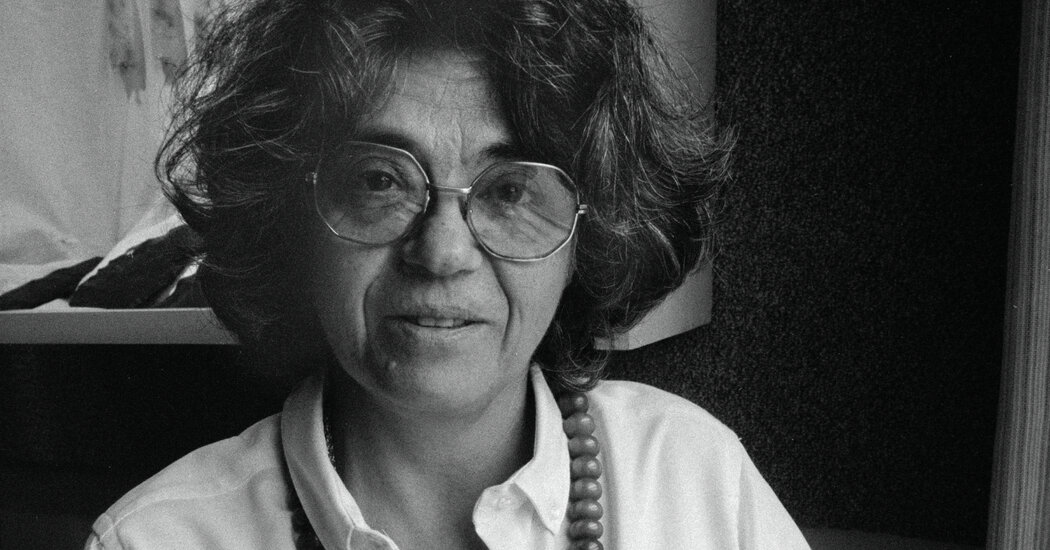Niede Guidon, a Brazilian archaeologist whose work called into question a longstanding theory of how the Americas were first populated by humans, and who almost single-handedly transformed a hardscrabble region of northeast Brazil into the Serra da Capivara National Park, died on Wednesday at her home near the park, in São Raimundo Nonato. She was 92.
Marian Rodrigues, the park’s director, said the cause was a heart attack.
Dr. Guidon was perhaps best known in international scientific circles for her disputed findings that human beings arrived in the Americas 30,000 years ago or more. But few questioned her accomplishments in tracking down and preserving hundreds of millennia-old rock paintings in a semiarid, cactus-studded, impoverished corner of Piauí state.
In 1979, at her insistence, the Brazilian government made the area a national park, and in 1991, again largely because of her, UNESCO, the United Nations cultural agency, declared it a World Heritage site. She then became instrumental in the creation of two museums nearby: The Museum of the American Man, which opened in 1996, and the Museum of Nature, in 2018. And she had an outsize role in attracting investment to the town, leading to a new airport and a federal university campus and to vastly improved public education in the region.
“The best way to preserve the paintings was to preserve the surroundings, and to preserve the surroundings, you had to provide resources for the people,” Antoine Lourdeau, a French archaeologist who worked with Dr. Guidon on and off for about a decade starting in 2006, said in an interview. “I don’t think most archaeologists are conscious of the social implications of their own work.”
Dr. Guidon was particularly effective in training and employing women in a region where men held sway and domestic violence was common, said Adriana Abujamra, the author of a 2023 biography of Dr. Guidon. “I heard many, many touching testimonials to her from women who gained financial autonomy,” she said.
Aside from working for the park and museums, some as guides and guards, many locals produce honey and ceramics that are sold nationwide through initiatives that Dr. Guidon started in the 1990s.
Niede Guidon was born on March 12, 1933, in Jaú, a small city in São Paulo State. Although Neide is a popular Brazilian name, Niede is not. Her father’s side of the family was French, and she was named for the Nied River, which runs through France and Germany.
After studying natural history at the University of São Paulo and receiving the equivalent of a bachelor’s degree in 1958, Ms. Guidon took a job that year as a teacher in the small and predominantly Roman Catholic town of Itápolis. But after denouncing corruption within the school to a São Paulo magazine in early 1959, the town — egged on by school administrators — turned against her.
As a single woman who drove a car, skipped Mass and taught evolution, she was an easy target in largely conservative Itápolis. Tensions grew, and after violent protests, she and two other female teachers fled, escorted by police officers.
“All that was missing to complete the medieval scene was a bonfire to burn the witches,” she told a reporter at the time, according to a 2024 podcast about her life.
Later that year, she took at job at the Paulista Museum in São Paulo, and it was there that she became interested in archaeology. During a photographic exhibition she had organized — of prehistoric Brazilian rock drawings — visitors from northeastern Brazil showed her photographs of the paintings in Piauí, the ones that she would devote her life to preserving.
But not for a while. Her initial attempt to see them, in 1963, failed when the collapse of a bridge prevented her from gaining access to the area. The next year, she fled Brazil to Paris after being tipped off that she would soon be arrested by the new military dictatorship, which had overthrown President João Goulart to gain power.
She studied archaeology in France, eventually earning a doctorate from the University of Paris in 1975, though she returned frequently to Brazil for field work. In 1970, Dr. Guidon was finally able to visit the rock paintings in Piauí. Stunned by their complexity, she began to visit regularly, organizing teams for days-long treks through difficult terrain to catalog what turned out to be hundreds of archaeological sites.
She returned to Brazil for good in 1986, and six years later moved to São Raimundo Nonato, where she was known around town as “Doutora,” or Doctor.
In the 1990s, excavations near the painting sites uncovered material — including carbon remains from presumed firepits and chipped stone tools — that laboratories dated to 30,000 years ago. Dr. Guidon was astonished. But other scientists were highly skeptical, especially those from the United States, who adhered to the Clovis model, named after an archaeological site in New Mexico, where evidence supported the theory that humans most likely arrived in the Americas 13,000 years ago by crossing a land bridge that is now the Bering Strait.
Though scientists now generally agree that humans arrived on the North American continent a few thousand years earlier, Dr. Guidon’s findings are still controversial. The question remains whether the materials excavated near the painting sites were created by humans or by natural forces.
But her work did bring attention, money and resources to Piauí, and even some of her academic critics acknowledge her accomplishments.
“She was a stateswoman with a sense of purpose, who knew how to persuade people,” said André Strauss, an archaeologist at the University of São Paulo. He doubted some of Dr. Guidon’s findings but nevertheless admired her charisma — so much so that he called her “the Churchill of northeastern Brazil.” Like Churchill, she had a flair for the dramatic, often threatening to pack up and return to the more refined life she led in Paris as an academic, according to Ms. Abujamra’s biography.
But she never did. On the morning of June 5, she was buried in the garden outside her house in São Raimundo Nonato.



